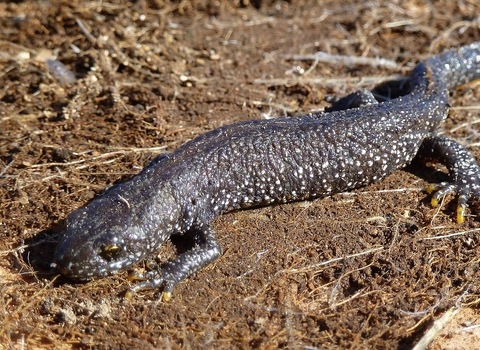
©Joy Russell
Great crested newt
With its prominent, wavy crest, the great crested newt, also known as the 'warty newt', looks like a mini dinosaur! This protected species favours clean ponds during the breeding season.
Scientific name
Triturus cristatusWhen to see
March to OctoberSpecies information
Category
Statistics
Length: up to 17cmAverage lifespan: 6-15 years
Protected in the UK under the Wildlife and Countryside Act, 1981. Priority Species under the UK Post-2010 Biodiversity Framework. Listed as a European Protected Species under Annex IV of the European Habitats Directive.
Habitats
About
Newts are amphibians, breeding in ponds during the spring and spending most of the rest of the year feeding on invertebrates in woodland, hedgerows, marshes and tussocky grassland. They hibernate underground, among tree roots and in old walls. The UK's populations of the great crested newt are internationally important.How to identify
Our biggest newt, the great crested newt is almost black in colour, with spotted flanks and a striking, orange belly. It has warty skin and males have a long, wavy crest along the body and tail during the breeding season.Distribution
Widespread across lowland England and Wales.In our area
Suffolk Wildlife Trust are helping to bring great crested newts back to Suffolk's ponds:
Did you know?
Individual great crested newts can be identified by looking at their bellies as the pattern of black spots they each sport is as unique as a fingerprint. As well as their distinctive crests, males have an extravagant courtship display to woo females: they stand on their front legs, arch their back and wave their tail around as if they are dancing.Suffolk Wildlife Trust are helping to bring great crested newts back to Suffolk's ponds:
